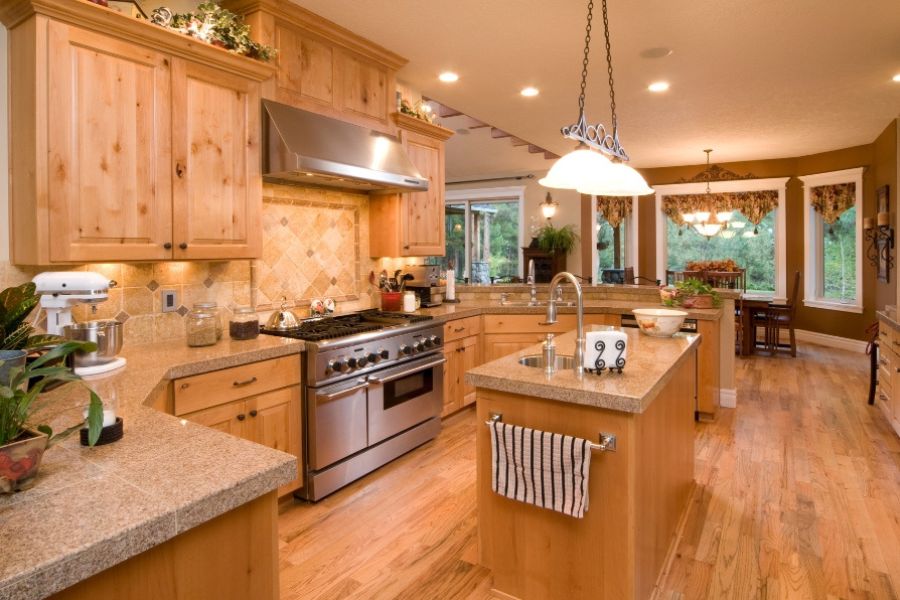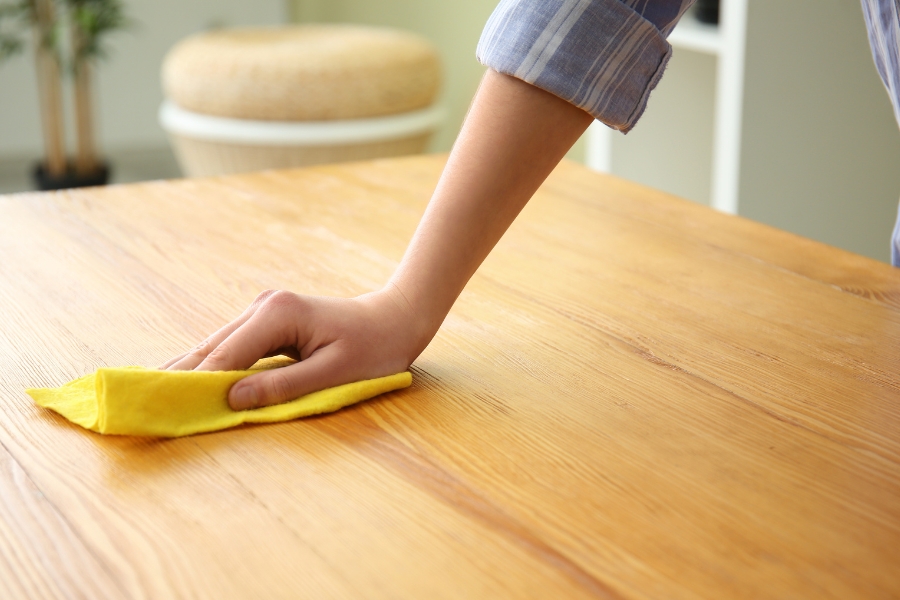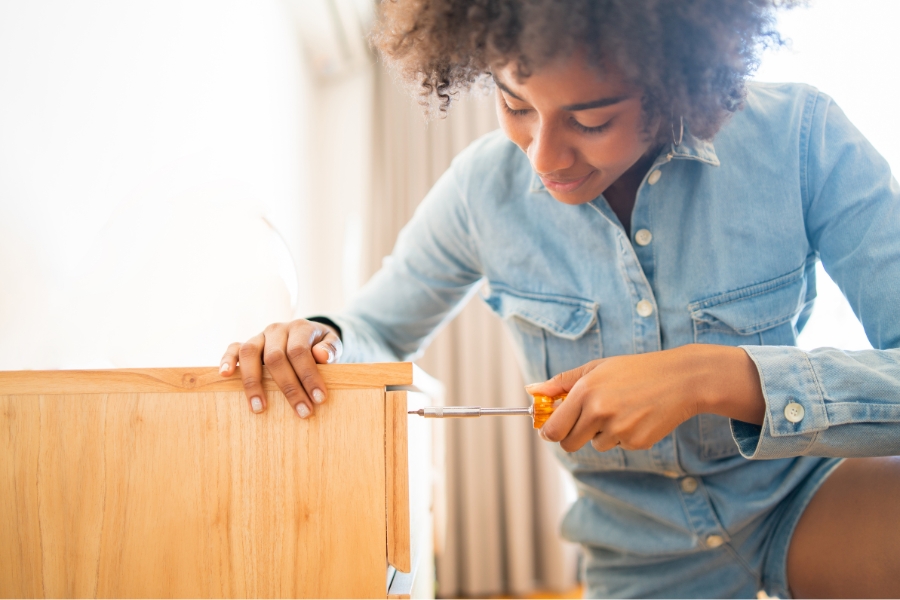
Our Top Tips for Wood Furniture Maintenance
So, you’ve gone and spent your hard-earned money on some beautiful wood furniture, and you couldn’t be happier with it.
But after parting with a good chunk of change to pay for that furniture, you want to do everything you can to make sure it’ll stay in good shape and retain its beauty for many years to come.
That being said, if you want to ensure the longevity of your wood furniture, then you’re going to need to have a good understanding of wood furniture maintenance.
From cleaning, inspecting, and repairs to knowing how to handle spills, stains, and everything in between, when it comes to maintaining wood furniture, you’ve got to know how to do it all.
So, if you’re wondering how to take care of wood furniture, and you want to learn about wood furniture maintenance, then you should definitely keep reading.
Because in this article, we’re going to offer our top tips for wood furniture maintenance, so you can make sure your furniture stays in great condition well into the future.
Wood Furniture Maintenance 101
Wood furniture can add warmth and character to any indoor space, but its longevity and beauty depend on proper care and maintenance.
If you want your wood furniture to last, it’s also important to understand the unique characteristics of wood and the best practices for its upkeep, along with how that relates to the wood that was used to build your furniture.
With that in mind, below we’ve offered our top tips for wood furniture maintenance, and what you need to know about the unique properties of wood and the types of wood that are typically used to build furniture.
Understanding Wood Furniture
Wood is a dynamic, living material even after it has been crafted into furniture.
It reacts to whatever environment it’s placed in, expanding and contracting with changes in humidity and temperature. This intrinsic characteristic of wood necessitates a very specific and cautious approach to care and maintenance.
That being said, taking care of wood furniture involves more than just regular cleaning.
Routine inspection and upkeep are also needed for wood furniture maintenance, and this requires an understanding of the material, vigilant care, and an appropriate response to environmental factors.
Types of Wood
Different types of wood require different care if you want to keep them in pristine condition.
For instance, hardwoods like oak and maple have different care requirements than softer woods like pine, and both types of wood will benefit from a stable environment with controlled humidity to prevent cracking or warping.
Hardwoods, which are derived from deciduous trees, are denser and more durable. This density makes them less prone to scratches and dents, which means they tend to require less frequent maintenance.
When caring for hardwood furniture, regular dusting and occasional polishing with a specific hardwood cleaner is usually sufficient to maintain its lustre. You should also do your best to ensure it avoids direct sunlight and extreme temperatures if you want to prevent warping or fading.
In contrast, softer woods like pine, sourced from coniferous trees, are more susceptible to damage due to their lower density. This means they tend to scratch and dent more easily, necessitating more careful handling. Regular dusting is important, but so is frequent inspection for scratches or dents.
For pine furniture, it’s often recommended to use a soft, slightly damp cloth for cleaning and to avoid harsh chemicals that can strip the wood of its natural oils. Specialized pine wood polish can also be used to enhance its natural grain and provide some protection.
But no matter what kind of furniture you have, you’ve got to know the type of wood it’s made of and understand what kind of maintenance it requires so you can give it the best possible care.
If you’re unsure of what to do, try reading the manufacturer’s instructions, asking the person who built your furniture, or doing some further research, if need be.
Regular Cleaning

Regular cleaning is vital for maintaining the appearance and health of wood furniture, regardless of what kind of wood was used to make it. For wood furniture maintenance, cleaning should include:
Dusting: You should use a soft, dry cloth for regular dusting, and avoid feather dusters as they can leave scratches. Microfibre cloths are recommended because they effectively pick up and hold dust without the need for cleaning sprays.
Deep Cleaning: For deeper cleaning, you should use a mild dish soap diluted in water, and wring the cloth out thoroughly to ensure it’s damp, not wet, to avoid saturating the wood. Then, gently wipe the surface and follow up with a dry cloth to avoid any water marks.
Polishing: Wood furniture benefits from occasional polishing to maintain its lustre, but you should make sure to use a polish that’s appropriate for the type of wood and finish that was used to build your furniture. Some polishes will offer added protection against sunlight and moisture, but whatever you choose to use, make sure to apply it sparingly and buff with a soft cloth.
Environmental Considerations
The environment also plays a significant role in the maintenance of your wood furniture. Here are some environmental considerations for taking care of wood furniture:
Humidity and Temperature: Wood expands in high humidity and contracts in low humidity, which can lead to cracking and warping. With that in mind, you should aim to maintain a consistent humidity level, ideally between 40-60%. Also, make sure to avoid placing furniture near heat sources like radiators, as the heat can cause wood to dry out and crack.
Sunlight: Prolonged exposure to direct sunlight can fade and damage wood, so try to use curtains, blinds, or UV-protective window films to mitigate sun exposure. You can also rotate furniture periodically to ensure even exposure and fading if need be.
Handling Spills and Stains
Aside from doing regular cleaning, maintenance, and inspection on your wood furniture, it’s also important to know how to properly deal with a spill or stain immediately after it happens. Here’s what you need to know:
Immediate Response: You should do your best to address spills immediately by blotting with a dry, soft cloth, and make sure to avoid wiping, as it can spread the spill.
Avoiding Harsh Chemicals: Whatever you do, steer clear of all-purpose cleaners and solvents that can damage wood finishes. Instead, choose products that are specifically designed for wood furniture.
Stain Removal: For stubborn stains, it’s best to consult a professional, as homemade remedies or harsh chemicals can exacerbate the issue and end up making the stain worse.
Protecting Wood Surfaces
Another thing to keep in mind is how to properly protect wood furniture from damage that can be caused by items placed on its surface. Here’s what you can do to protect it:
Use Protective Items: Make sure to use coasters, placemats, and trivets to protect wood surfaces from moisture, heat, and scratches. You can also consider using an additional glass or wooden tabletop for added protection.
Felt Pads and Sliding: Attaching felt pads to the underside of home décor items can help to prevent objects from sliding across wood surfaces, which can cause significant damage. In addition, you should try lifting items to move them if you want to prevent scratches and gouges.
Regular Maintenance Checks

Over time, wood furniture can get damaged, but it’s important to check it regularly so you can mitigate any damage before it gets worse. Here are some things you’ll want to inspect:
Loose Joints and Fasteners: You should periodically inspect and tighten any loose screws or joints. This proactive approach can prevent further damage and maintain the structural integrity of your furniture.
Pest Inspection: If you want your furniture to last, you should be vigilant about pests such as termites. Regular inspections can catch infestations early, saving your furniture from significant damage.
Refinishing and Repairs
When wood furniture gets damaged, or the finish wears off, it’s important to rectify these issues before more damage can occur. Here’s what you need to know about refinishing and repairing your wood furniture:
Minor Repairs: Small scratches and nicks can often be remedied at home with touch-up markers or a repair kit designed for wood furniture. Typically, these techniques are pretty easy to pull off yourself, and they can effectively conceal minor damage.
Refinishing: Over time, the finish on wood furniture may wear off, but refinishing can renew its appearance and make it look new again. This process often involves stripping the old finish, sanding, and applying a new coat of stain or paint. It’s a delicate task, so you might want to leave it to a professional.
Seeking Professional Help: To fix considerable damage or take care of delicate refinishing or repairs, you might want to consult a professional restorer, especially if you have antique wood furniture. They have the expertise to repair and restore your furniture without compromising its value or integrity.